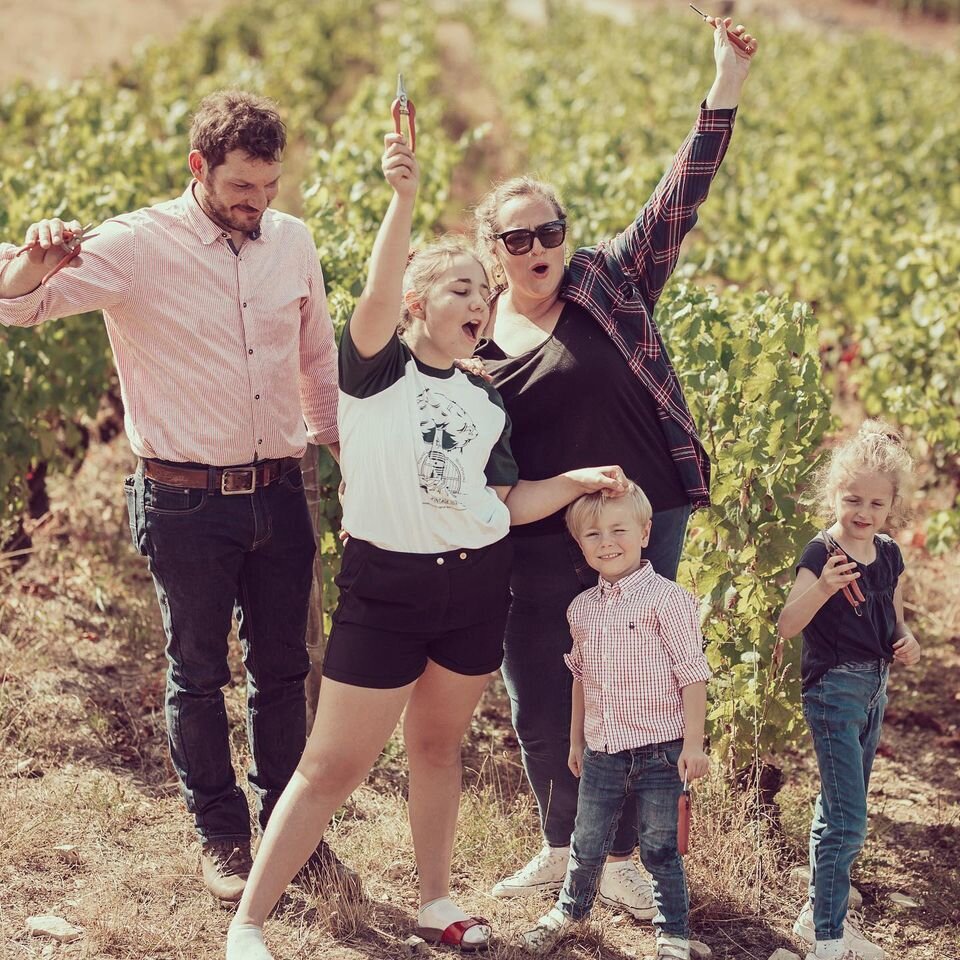Lucien Rocault: Winemaker Part 1
The winery of Lucien Rocault sits within the hillside village of Orches in Saint Romain, where the Rocault family have been farming grapes as far back as 1280. Lucien Rocault is an 18th generation steward of his family’s property. Since 2009, husband and wife Lucien and Fanny started their journey into winemaking and manufacturing the parcels that Lucien’s family had tended for centuries.
Through Lucien’s courage and craftsmanship, the winery is now in it’s 11th year of winemaking transitioning from exclusively selling fruit as a “cooperator”, to a fully established winemaking house. Lucien’s father and grandfather are still involved every day, in tending and maintaining the vineyard by hand.
Picture: St. Romain Lucien and family celebrate harvest in vineyards.
Image credit: @lorenecreuzotphotographie
From establishing the label to generating ideas for future growth, Lucien and wife Fanny have worked in partnership. “My wife Fanny pushed me a with a little saying” Lucien recalls. “If we’re going to start to create our own wine, it might as well be organic”. They practiced organic viticulture from Day 1 and achieved the organic certification in 2012.
Between 2009 and 2014 the winery patiently acquired more acreage, slowly taking ownership of vineyards in Côtes de Beaune and St Romain. The natural decision to diversify the premium portfolio meant Lucien would purchase grapes from his parents in Saint Aubin 1er Cru ‘En Remilly’, Beaune, Pommard and Pommard 1er Cru ‘Les Charmots’.
“In Burgundy we are lucky to have terroirs and wines that naturally reveal these unique properties. We are just here to magnify and take the best out of each terroir. Particularly considering that, our approach to winemaking is so hands off. We play a supportive role and let nature do everything. Our responsibility to the wine is to make the right choices when considering the duration of barrel aging and methods of winemaking.”
Picture: Pommard Burgundy, France Communal Harvest Celebration. Credit: @lorenecreuzotphotographie
Age-old winemaking methods take center stage at the family’s winery in St Romain. The grapes are harvested entirely by hand and are processed partly destemmed and partly whole bunch. Juice and skin are cold soaked for 20 days with regular pumping over or “pigeage” to allow long and gradual color and flavor development that is well-integrated.
For the winery’s signature Hautes Côtes, the team make use of temperature regulated concrete fermentation vats for long skin contact before “jus de goutte” or separating of the juice via free run. Manual punch downs extract further phenolics for peak tannin structure.
“We’ve proudly never used commercial yeasts and we strive to ensure we are protecting the wild vineyard yeasts to allow true expression of terroir and our family’s vineyards. In the winery we are vigilant and hygienic but also ensure that we are not too sterile to allow natural expression and complexity in the wine”, Lucien attests.
Picture: Lucien Rocault Hand Harvesting Grape Bunches. Image credit: @lorenecreuzotphotographie
Due to the family history of being solely farmers rather than winemakers, Lucien was the first among his ancestors to explore the world of oak barrel aging. Not being tied to tradition in this aspect has allowed Lucien to experiment with different cooperages (barrel makers), regions of origin across France, toast level as well as barrel size.
The use of larger format (500 liter) puncheons rather than Burgundian style barriques, imparts less artificial flavor allowing the wine to express it’s natural bright and jovial fruit character.
“My goal, especially on the Hautes Côtes, is to drink and enjoy the first bottle, and then open the second almost without realizing. It’s really the fond, fresh, fruity side of wine that we are looking for so we can have fun right away. The wines are designed to create memories over good food, great company and conversation” says Lucien.




